

 |
The Farnsworth
Invention: Fact -v- Fiction
|
 |
Act I, Scene 1: |
| The Play |
The Facts
|
|
| In his opening monologue the "David Sarnoff" character states that Philo Farnsworth was born in Indian Creek Idaho and later moved with his family to his uncle's potato farm in Rigby, Idaho | Philo Taylor Farnsworth was born in a log cabin in Indian Creek Utah on August 19, 1906. His family moved to Rigby Idaho when Philo was 11. It was there that young Philo had his first encounter with electricity. | 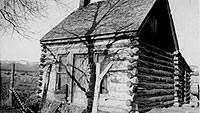 Philo T. Farnsworth birthplace Indian Creek, Utah |
| Sarnoff rattles off the names of John Logie Baird, Nipkow, Ernst Alexanderson, and Vladimir Zworykin | In the 1920as, Baird, Alexanderson, Herbert Ives, Charles Jenkins and others attempted to transmit television pictures by mechanical means pioneered in the 1880s by the German engineer Paul Nipkow.
|
|
| All of the earliest attempts to electrify, transmit, and display a moving image over wire or wireless were built around variations on the Nipkow Disk,which used a spiral of perforations to scan the image into component elements in front of a flickering photo electric cell. | |
|
As Sarnoff says, the British think that a Scot named
John Logie Baird invented television. |
Baird got farther with mechanical television than just about anybody. In 1926, he transmitted moving images by radio across the Atlantic, but his was system was a jalopy trying to go 90 miles an hour. |
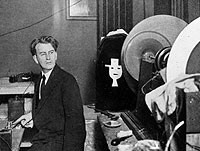 John Logie Baird's mechanical television system, ca. 1926 |
| Sarnoff describes Farnsworth's moment of conception, at age 14, while riding a "three disc plow" in his uncle's potato field... | Thinking that television might be a good thing to start a career as an inventor, Farnsworth was indeed 14 years old when he started thinking about electrons, magnetic deflection, and cathode ray tubes. In the summer of 1921, while cultivating a field, he stopped to survey his day's work and, seeing the rows his disc-harrow had tilled in the soil, was struck with a way that he could trap light in a vacuum tube and then scan it, one line-at-a-time, with a beam of electrons. Television as we know it arrived on the planet in that bolt of inspiration. | 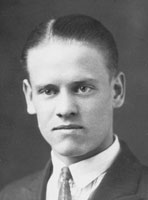 A young man with a bright idea |
| ..after which he went to see his 9th science teacher, Justin Tolman. He completes a whole year's worth of homework over one weekend, and drops it on the teacher's desk. | Farnsworth enrolled as a freshman at Rigby High School in the fall of 1921. He did manage to cajole his way into more senior science classes; The teacher's name was in fact Justin Tolman | 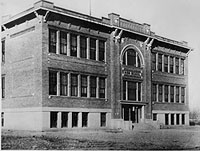 Rigby High School |
| Tolman asks the kid if he's read Tesla, Edison, Marconi. The kid says he also likes the Sears Roebuck catalog. | As a boy Farnsworth read every science magazine or book he could get his hands on. The Farnsworth family had little in the way of material possessions, and the Sears catalog was one way the children could picture the world beyond their farm in Idaho. Indeed, for families all over America, the Sears catalog was known as "the wish book." |
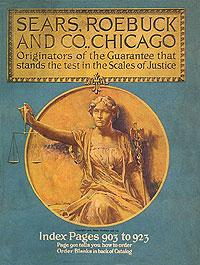 |
| Philo asks Tolman "can I draw something for you?" and proceeds to describe the basic operation of his television system, describing how photoelectric materials and cathode ray tubes could convert light into electricity in a transmitter and back into light in a receiver -- line by line, much the way he'd plowed his field. The teacher is mystified. | Sometime in late winter or early spring 1922,, Farnsworth drew this sketch for Mr. Tolman, which shows an optical image, an electrical image, an aperture, and magnetic coils -- the basic elements of his Image Dissector (camera) tube. The concept replaces all the spinning wheels and motors of the earlier concepts with the electron itself. |  Hand-drawn sketch, ca. 1922 |
Want the whole story? Read a Book! |
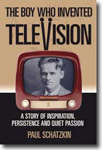 The Boy Who Invented Television A Story of Inspiration, Persistence, and Quiet Passion by Paul Schatzkin |
|